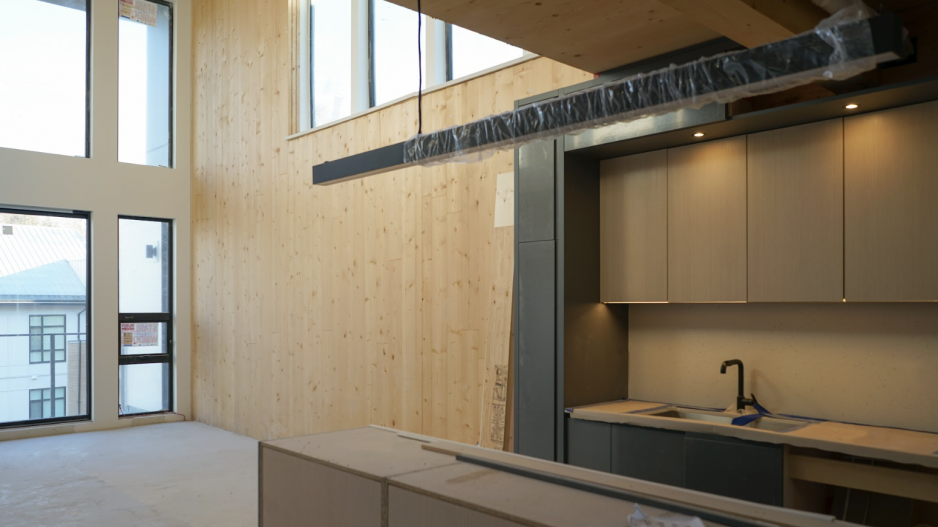Mass timber is becoming an increasingly sought-after material for developers as Vancouver continues to prioritize sustainability and the capacity to build more effectively in the current market.
“The use of mass timber is fairly new to B.C. It's well known in other places, especially in Europe, and it's just recently that we started in Vancouver to take advantage of some of those lessons,” said Gerry Reibling, who works in land, development and construction for Aragon Properties Ltd.
Mass timber, various engineered wood products and cross-laminated timber (CLT) – a type of mass timber – can be described as “plywood but with better quality,” said Reibling.
“It's several layers of kiln-dried boards, they stack them together and they alternate them. And they're glued together and then pressed into a solid form. And that form is usually a rectangular large panel, which is performing really well in terms of its strength relative to its weight,” he said.
The material has advantages related to its strength, carbon sequestration and ease of use on a construction site.
More developers are turning to this product.
Timber House by Aragon Properties, one of the largest CLT projects in North America, and Adera Development Corp.’s have promised to deliver 1,000 mass timber homes by 2025. Adera broke ground on a new mass timber community in Coquitlam this week.
Adera's proprietary building material is SmartWood, a type of CLT product, according to Adera COO Rocky Sethi.
“Our housing platform has been wood and we see SmartWood or mass timber as the evolution of that wood-frame construction,” he said. “It's equivalent to concrete in terms of performance and sound quality, but has the carbon sequestration and sustainability benefits of wood frame.”
Studies of tall mass timber buildings estimate a 25-45 per cent reduction in embodied carbon, according to a City of Vancouver report. In addition, each of Adera’s SmartWood buildings can sequester enough carbon to take roughly 1,000 cars “off the road for a year,” Sethi said.
In a recent Leger survey commissioned by Re/Max Canada, 66 per cent of respondents said protecting the environment will be a factor in their real estate journey in 2023.
“We see younger buyers today being more conscious of their carbon footprint. And so we definitely see an opportunity there, as we go forward, that more buyers will select SmartWood homes,” Sethi said.
Though the price is higher than regular wood-frame construction, the cost of investing in mass timber is balanced out by the ability to build faster.
“Our floor comes in, you just put it down, it's completely safe, it's one piece and then you put the next piece next to it. So, it's a lot faster that way. Essentially we see savings in terms of time of around 30 per cent on framing,” Sethi said.
Mass timber is harvested and fabricated regionally from sustainably managed forests, according to those who spoke to Glacier Media.
The mass timber sector is expected to see growth in the coming years with the potential to create 1,880 jobs in technology, forestry, engineering and design by 2035, according to the provincial government. In addition, an estimated 2,350 more jobs can be created in mass timber manufacturing.
Notable mass timber buildings in Metro Vancouver include Canada’s Earth Tower, UBC’s Brock Commons Tallwood House and the Burrard Exchange office building.
During construction, UBC’s Tallwood House reduced traffic by 80 per cent. This in turn decreased the amount of disruption and increased safety for students, as components could be delivered in bulk and the site required less workers, according to the City of Vancouver report.
“B.C.'s well positioned with the resources we have, the trade skills and experience that we have to build more CLT,” said Reibling. “Homebuyers' expectations for quality and sustainability, in particular, are now more important.”




